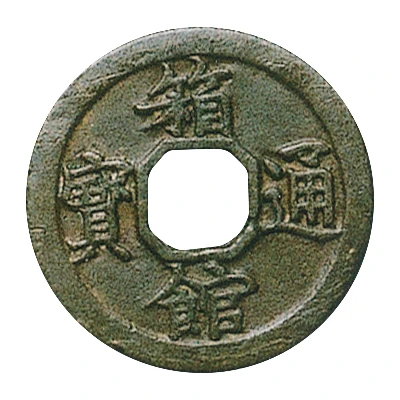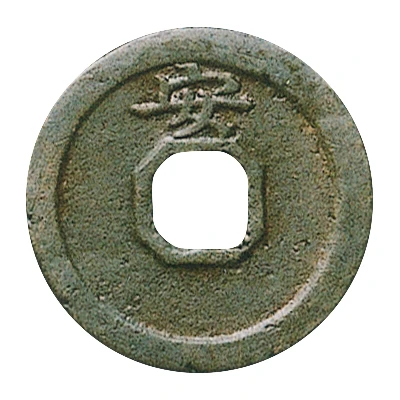


© Ginza Coins
1 Mon "Hakodate-tsūhō" Bosen; octagonal hole ND
1856 year| Copper (Copper alloy) | - | - |
| Issuer | Ezo Territory (Japanese feudal domains) |
|---|---|
| Type | Pattern |
| Year | 1856 |
| Value | 1 Mon |
| Currency | Mon (1856-1864) |
| Composition | Copper (Copper alloy) |
| Shape | Round with cutouts (With an octagonal hole) |
| Technique | Cast |
| Orientation | Medal alignment ↑↑ |
| Demonetized | Yes |
| Updated | 2024-10-06 |
| Numista | N#290632 |
|---|---|
| Rarity index | 97% |
Reverse
A character above hole, indicates Ansei era
Lettering: 安
Translation: An
Interesting fact
One interesting fact about the Pattern 1 Mon "Hakodate-tsūhō" coin is that it was minted during a time of significant change in Japan. The coin was produced in 1856, just a few years before the Meiji Restoration of 1868, which marked the end of Japan's feudal era and the beginning of its modernization. The coin's design, featuring an octagonal hole in the center, was a departure from the traditional round shape of Japanese coins and was likely influenced by Western coinage. This blending of traditional and modern elements in the coin's design reflects the cultural and economic shifts that were taking place in Japan during this time period.